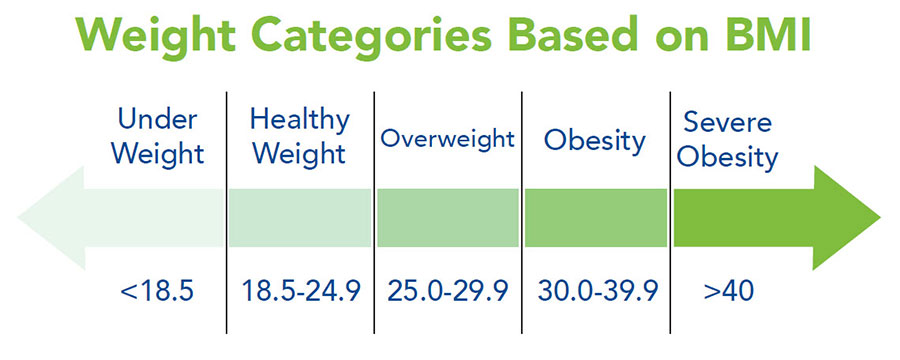
Body fat is hard to measure directly. So it is often measured by body mass index (BMI). BMI measures weight related to height. It is a common way to measure body fat and is one tool healthcare providers use when talking about weight.
To find your BMI, please see the BMI chart To calculate your BMI, please here.
BMI is not a percentage of body fat. BMI is only part of a diagnosis of obesity. Ask your healthcare provider for other ways of determining obesity.
How Weight is Categorized

Overweight
Having a BMI in the overweight range (25.0 29.9) is a health concern. Excess weight is hard on your body. It can lead to other health problems including obesity. People who have a BMI in the overweight range and have other health problems (such as type 2 diabetes or heart disease) need to see their healthcare provider for treatment options.
Obesity
Obesity is a disease where a person’s weight is in an unhealthy range (BMI of 30.0-39.9). It is a disease that can lead to other health problems. Talk with your healthcare provider to better understand and treat obesity.
Severe Obesity
Someone who is more than 100 pounds over their healthy body weight (BMI greater than 40) has severe obesity. Severe obesity has the greatest risk of other health problems. People with severe obesity need to see their healthcare provider for treatment options.
